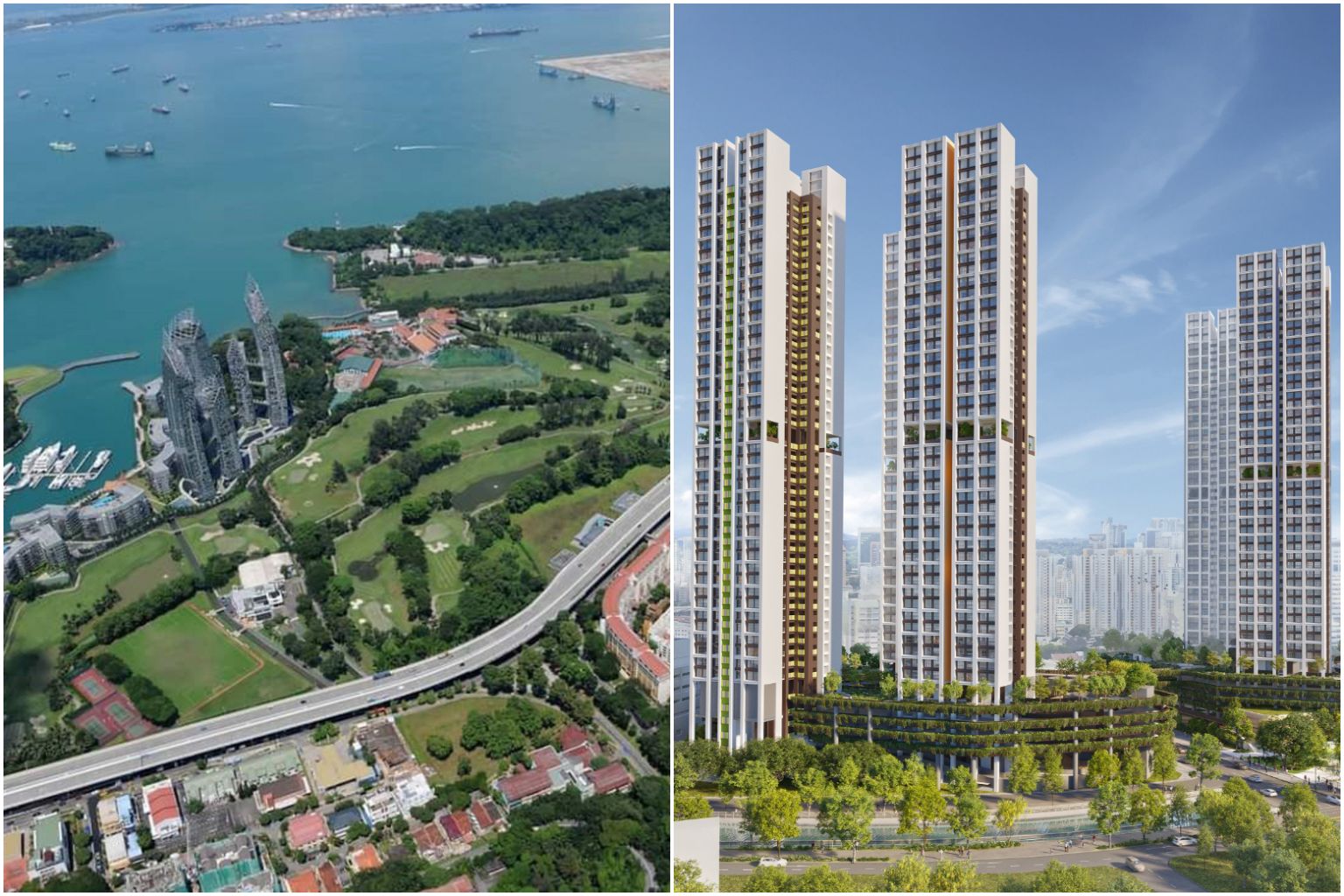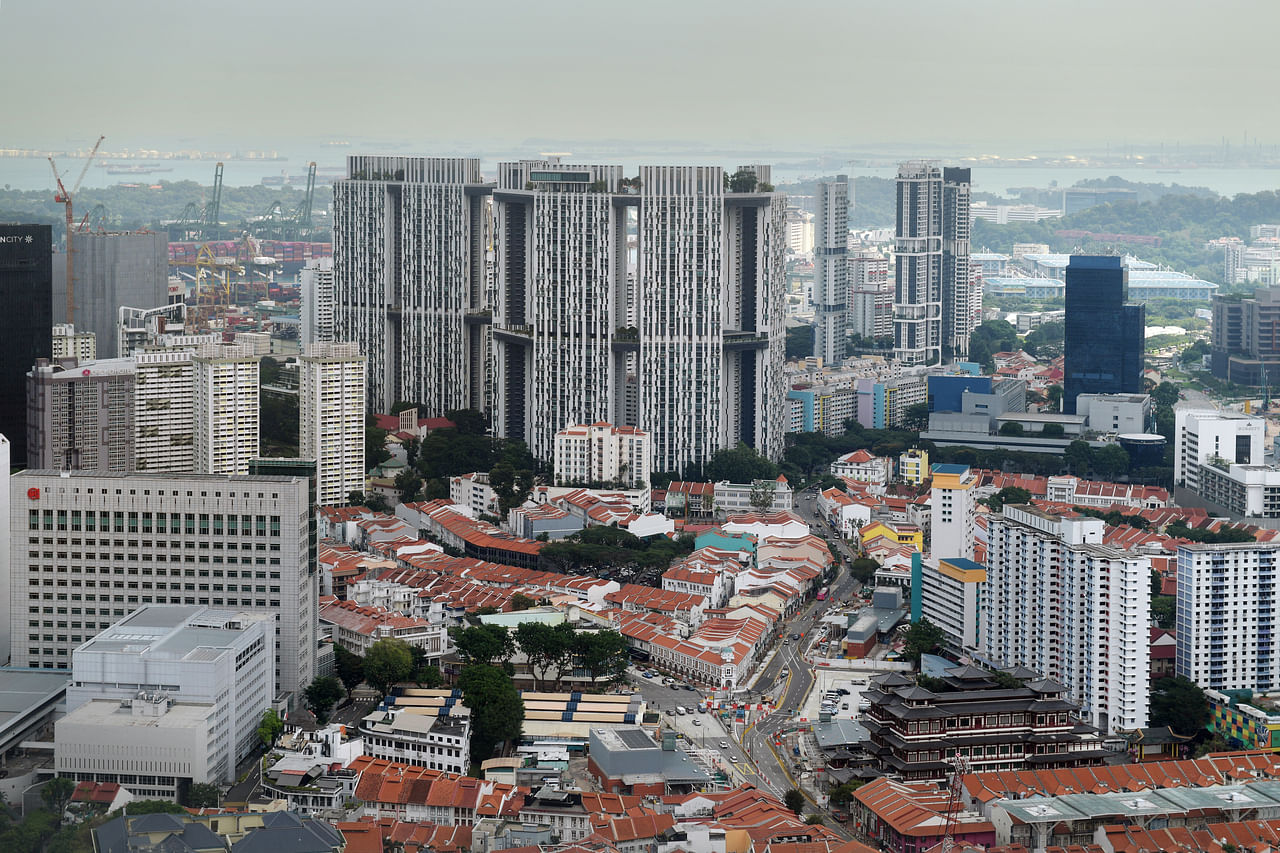What is HDB's prime location public housing model? Will The Pinnacle@Duxton be affected?
Sign up now: Get ST's newsletters delivered to your inbox

The Great Southern Waterfront (left) and the Rochor BTO project. The PLH model is aimed at keeping future HDB flats in prime, central locations affordable and inclusive.
PHOTOS: URA, HDB
Follow topic:
SINGAPORE - Future Housing Board (HDB) flats in certain locations will be subject to tighter buying and selling conditions under a new prime location public housing (PLH) model.
The PLH model is aimed at keeping future HDB flats in prime, central locations affordable and inclusive.
"If left to the forces of the private market, it is likely that these attractive locations would likely become very expensive and exclusive locations, with housing that only the well-to-do can afford," said National Development Minister Desmond Lee on Tuesday (Oct 26).
A record number of HDB flats have changed hands for at least $1 million this year, with The Pinnacle @ Duxton arguably the "poster boy" for such transactions, although such units are not exclusively located in the central area.
Mr Lee said the PLH model was developed after almost a year-long public engagement with more than 7,500 Singaporeans.
"We recognise that we are acting against very powerful social and economic forces that drive stratification and segregation in every society, especially in successful cities," he said, adding that the model is necessary to achieve equitable outcomes.
Here are the key features of the PLH model and considerations behind them, according to Mr Lee.
Q: Where will this new PLH model apply? Will The Pinnacle @ Duxton be affected?
A: The new PLH model will be implemented for public housing in prime, central locations such as the city centre and Greater Southern Waterfront area.
It will apply only to future projects and not retrospectively to existing public housing, so The Pinnacle @ Duxton will not be affected.
On Tuesday (April 12), National Development Minister Desmond Lee announced the first Build-To-Order (BTO) project on the Keppel Club site in Greater Southern Waterfront will be launched within three years.
HDB said the PLH model will be applied to selected public housing projects in prime and central locations such as the city centre and surrounding areas, including the GSW which have very high market values and would require significant additional subsidies to keep flats affordable.
While the Keppel Club site is within the GSW, the authorities will consider a range of factors - such as the project's location, attributes and market values - before deciding whether to apply the PLH model, it added.

The new PLH model is aimed at keeping future HDB flats in prime, central locations affordable and inclusive.
PHOTO: ST FILE
Q: How will these prime HDB flats be made affordable when they are first launched during Build-To-Order sales exercises?
A: HDB provides additional subsidies, on top of the existing subsidies provided for other Build-To-Order (BTO) flats, to ensure these flats under the PLH model are launched at affordable prices.
However, the concern is whether this would lead to the lottery effect and excessive windfall gains when owners sell their flats on the open market.
To address these concerns, HDB will claw back the additional subsidies as a percentage of the resale price, also known as the "subsidy recovery", when the owner sells the unit. The subsidy recovery applies only to the first resale, and not to subsequent resale transactions.
The exact percentage of the subsidy recovery will be announced next month, at the launch of the Rochor BTO project, the first site under the PLH model. It may be adjusted for other projects in the future depending on market conditions and the amount of subsidies given by HDB.
Q: Will I still get priority for flats in prime locations if I am going to live near my parents?
A: For certain projects in prime locations, HDB may reduce the proportion of flats set aside for households who want to be near their parents or children under the Married Child Priority Scheme.
While many Singaporeans who participated in the consultation suggested removing such priority schemes completely to ensure equal chances to all applicants, HDB said it was important to facilitate mutual care and support across family generations.
Reducing the quota for these priority schemes instead of removing them completely strikes a fairer balance, said Mr Lee.
Adjustments to the quota will depend on the specific location and attributes of each project.
Q: How will these prime HDB flats be kept affordable on the resale market?
A: Those who want to buy a prime HDB flat on the resale market must meet the prevailing eligibility conditions for buying new flats directly from HDB.
These include having at least one applicant who is a Singapore citizen and a monthly household income not exceeding $14,000. Buyers must also not own or have an interest in a private property and not disposed of any in the last 30 months.
These resale restrictions will be in place for at least half of the 99-year tenure of each prime location flat, before HDB considers whether to review them.
Q: How will HDB ensure that prime flats will remain primarily for Singaporeans who want a home for themselves to live in and not to benefit from the lottery effect of reselling them?
A: The minimum occupation period (MOP) will be extended to 10 years, from the current five years for all other HDB flats.
Owners of these flats will not be allowed to rent out their whole flat at any point in time, even after the MOP is over. They will only be allowed to rent out spare rooms.
Both conditions apply to those who purchase directly from HDB and also subsequent buyers on the resale market.

